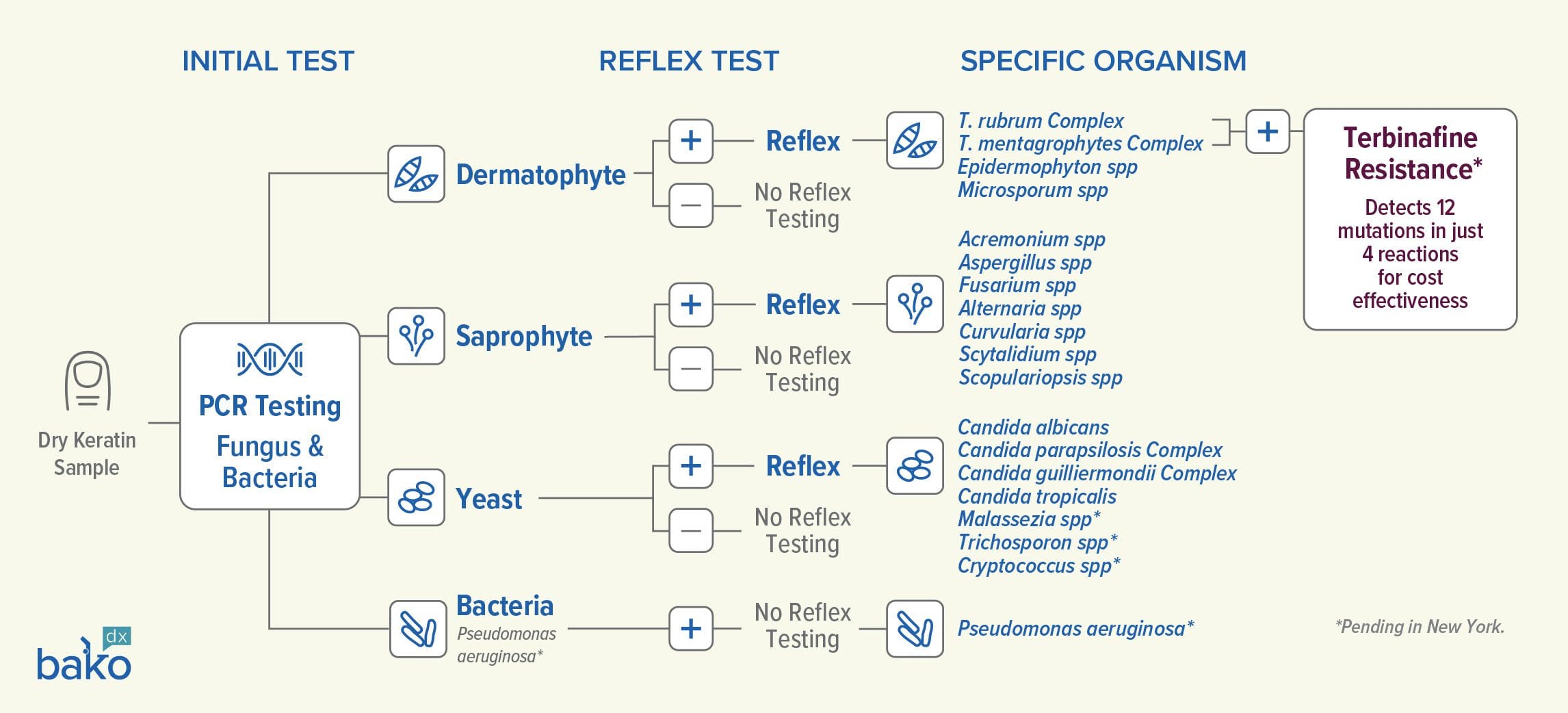New insights, only from BakoDx
Onychodystrophy PCR Test with Terbinafine Resistance
Know before you treat
While terbinafine is most often prescribed for onychomycosis caused by dermatophytic fungi, an increasing rate of cases with terbinafine resistance may be impeding treatment success.
To date, 12 specific genetic mutations have been identified in Trichophyton genera, primarily T. rubrum and T. mentagrophytes complex, which confer terbinafine resistance.
The new BakoDx Onychodystrophy PCR test with terbinafine resistance enables you to understand the likelihood of treatment effectiveness in days, instead of months.
Learn more about BakoDx Terbinafine Resistance testing
Please note the terbinafine resistance reflex is pending availability in NY.
How does BakoDx lab testing impact therapy outcomes, especially if a patient’s fungus is terbinafine-resistant?
Drag the slider right to see the Bako difference:
(1) Sigurgeirsson B, Olafsson JH, Steinsson JB, Paul C, Billstein S, Evans EG. Long-term Effectiveness of Treatment With Terbinafine vs Itraconazole in Onychomycosis: a 5-year blinded prospective follow-up study. Arch Dermatology 2002; 138:353–357.
The Growing Problem of Antifungal Resistance in Onychomycosis and Other Superficial Mycoses
Gupta, A.K., Renaud, H.J., Quinlan, E.M. et al. The Growing Problem of Antifungal Resistance in Onychomycosis and Other Superficial Mycoses. Am J Clin Dermatol 22, 149–157 (2021).
Abstract
Superficial mycoses are becoming increasingly resistant to current antifungal medications. As alternative therapeutic options are limited, the increasing frequency of reports of antifungal resistance is alarming. This epidemic parallels the rise of antibiotic resistance; however, the significance of this problem has yet to gain global attention. Here, we discuss the reports of antifungal resistance from around the world, present our own experience with treatment-resistant infections, and examine alternative treatment strategies. The majority of reports of recalcitrant infections indicate terbinafine resistance as the causative factor. Single-point mutations in the squalene oxidase gene is the most reported mechanism of resistance to terbinafine. Mixed infections of dermatophytes with non-dermatophyte molds and/or yeasts are becoming more prevalent and contributing to the resistant nature of these infections.
The key to selecting an effective antifungal therapy for a recalcitrant infection is identification of the infectious organisms(s) and testing susceptibility of the organism(s) to antifungal drugs. Combination and sequential therapy regimens are options, but both require active monitoring for hepatic and renal function, drug interactions, and other adverse effects. Selected topical antifungals with a wide spectrum of activity may also be considerations in some clinical presentations. Innovative treatment regimens and novel therapeutics are needed to overcome the rising epidemic of antifungal resistance.
Learn more about BakoDx Terbinafine Resistance testing
Please note the terbinafine resistance reflex is pending availability in NY.

